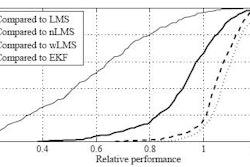Dear Radiation Oncology Insider,
September was a globe-trotting month for radiation oncologists, physicists, and vendors, with the European Society for Medical Oncology (ESMO) 2008 Congress and the American Society for Therapeutic Radiology and Oncology (ASTRO) 50th Congress being held in back-to-back week-long sessions in Stockholm and Boston, respectively. AuntMinnie.com will continue to report clinical findings and radiation oncology news presented at these conferences.
If asked to define a dominant theme for the ESMO and ASTRO meetings, one might suggest the utility of new technologies and techniques to precisely target tumors, with faster and fewer treatments to achieve lower recurrence rates of cancer and less severe morbidities for patients. This is good news. Cancer treatment protocols that were cutting-edge just a decade ago seem positively prehistoric, and an increasing number of long-term outcome studies are revealing that they were not without potential risk.
In this month's Insider Exclusive, we are reporting on the much higher risk of developing secondary cancers for survivors of pediatric Hodgkin's disease. For details on the first of two long-term outcome studies of patients who received radiotherapy treatment between 1960 and 1990, click here.
In other radiation oncology news, respiratory-motion compensation algorithms are helping to reduce the irradiation of healthy tissue during radiotherapy by compensating for the patient's breathing during treatment. Researchers from the University of Luebeck in Germany have developed new algorithms that reduce the computational burden of motion-tracking algorithms while maintaining accuracy, as detailed in a story by staff writer Eric Barnes based on a presentation from the Computer Assisted Radiology and Surgery (CARS) meeting.
Pointing out more positive news, the use of proton therapy instead of standard photon radiation can dramatically reduce the chance of a secondary malignancy, researchers from Massachusetts General Hospital announced at ASTRO in their hometown venue of Boston. Staff writer Wayne Forrest reports on the results of this large study, which is particularly relevant for young cancer patients.
How effective is radiation therapy? More clinical findings will follow about long- and short-term outcomes. But tracking the immediate effectiveness of radiotherapy treatment was another major topic at the ASTRO show. Read Wayne Forrest's article about research from the University of Texas M. D. Anderson Cancer Center on the use of dynamic contrast-enhanced MRI and diffusion-weighted MRI to detect early tumor response to head and neck radiotherapy.
Enjoy the remaining weeks of fall. We'll next be writing to you from the RSNA meeting in Chicago.



















